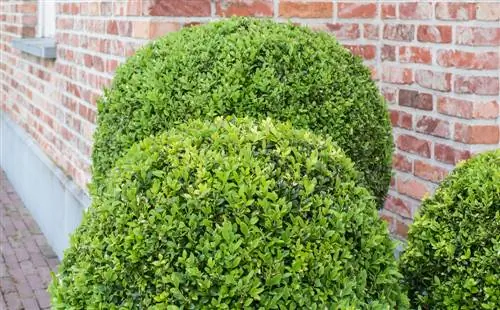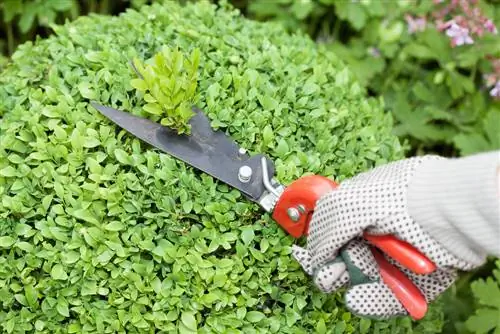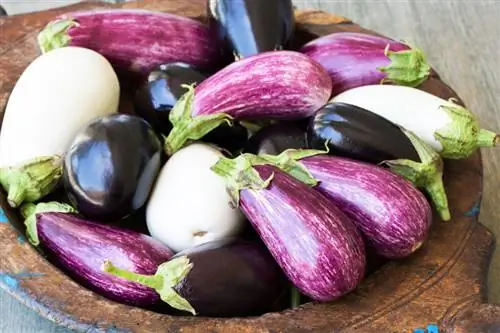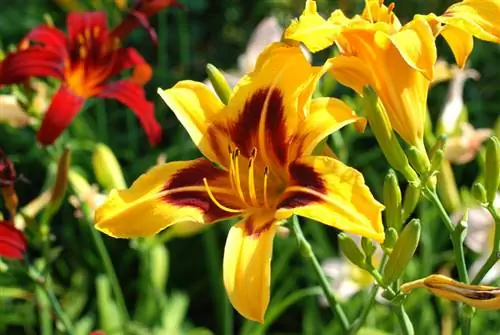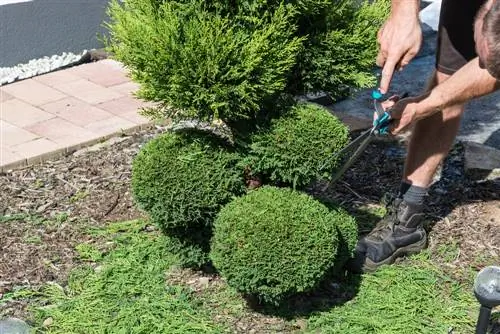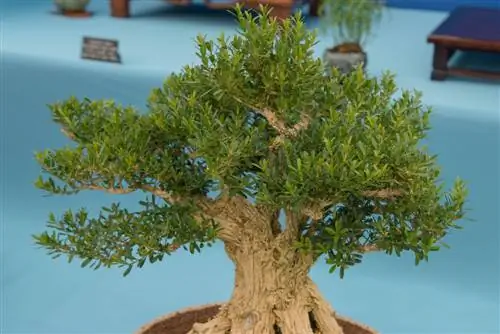- Author admin [email protected].
- Public 2023-12-16 16:46.
- Last modified 2025-06-01 06:02.
You should start your very first topiary with a simple geometric figure. Pyramids, spheres and cubes are easier to cut freehand, and they tolerate imprecise cuts more easily than figure cuts like peacocks or teddy bears. Especially since figurative forms can take many years before they take on a recognizable form.
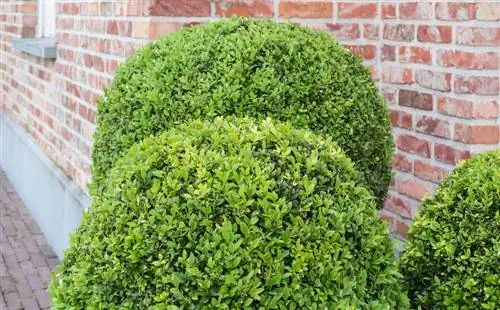
How to use a stencil for cutting boxwood?
To use a stencil for boxwood cutting, choose simple shapes such as pyramids or spheres, roughly cut the plant into the desired shape, and place a homemade or purchased stencil over it. Cut along the stencil lines for precise results and repeat if necessary.
Make simple shapes out of boxwood
To make the first topiary cut successful, use a template. You can buy these ready-made - they are often wire frames (€33.00 on Amazon) that are bought in the right size and placed over the box - or you can simply make them yourself. This also has the advantage that you can adapt the stencil to your book and your own ideas instead of the other way around, as would be the case with a purchased stencil with a given shape and size. But before you use the template, pre-cut the young plants:
- Roughly cut the plant into the desired shape by eye
- Cut a little at a time, but more often!
- The smaller the work steps, the more precise the result will be later.
- If you cut away too much at once, you end up with irregular shapes.
- Due to the slow growth of the boxwood, these need at least a year to grow out.
- After this first cut, let the box grow.
- After a few weeks, place the cutting pattern over the plant.
- Cut according to the pattern lines.
Repeat this step in the next few years if you want the box shape to grow and enlarge. When the plant has reached the desired shape and size, simply cut it back slightly at intervals appropriate to the shape and plant to maintain a clear outline and a dense growth pattern.
Make your own stencils - Here’s how it works
Cutting stencils are quite easy to make. To create a cone or pyramid shape, all you need is a few canes (for example made of bamboo) that you tie together like a tent. When cutting, the rods serve as guide rods to which the boxwood growth is trimmed back. A ball can be cut using a semicircle shape made from cardboard, Styrofoam or another suitable material, but you can also bend several wires over the box to form a ball. Simply insert the ends of the wires into the soil or potting substrate.
Shaping boxwood hedges
An effective hedge must be evenly covered with leaves. This is not easy to achieve in forms where a lot of leaf shade deprives the lower parts of the plant of light. Don't allow a hedge to become top-heavy, flatten at the top or tapered at the bottom, and have bare shoots at the base. Instead, let the hedge extend evenly from a narrow tip to a wide base so that it is easy to prune, grows he althily and is green at the base rather than bare from lack of light.
Tip
A band helps to trim the shaped hedge precisely and evenly to a height. Stretch a colored ribbon tightly at the desired height of the hedge and use this as a guide when cutting. The band is held by posts stuck into the ground at the side.

